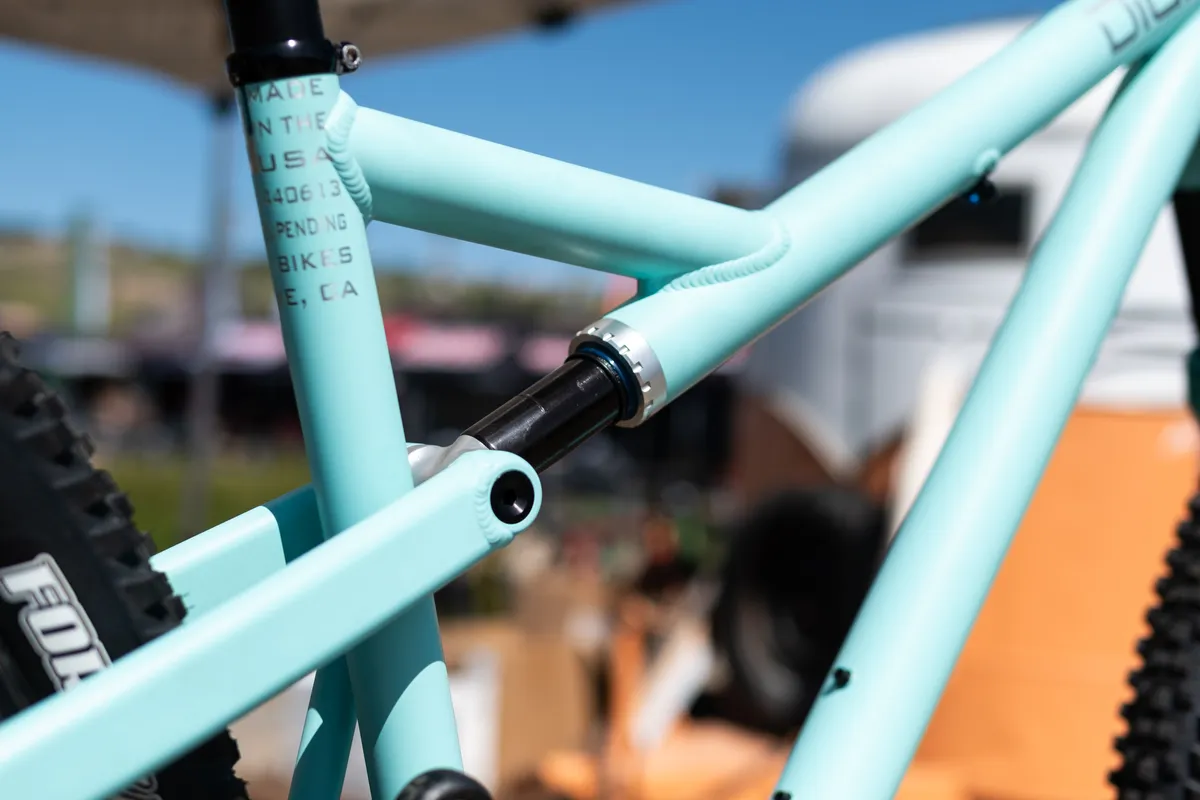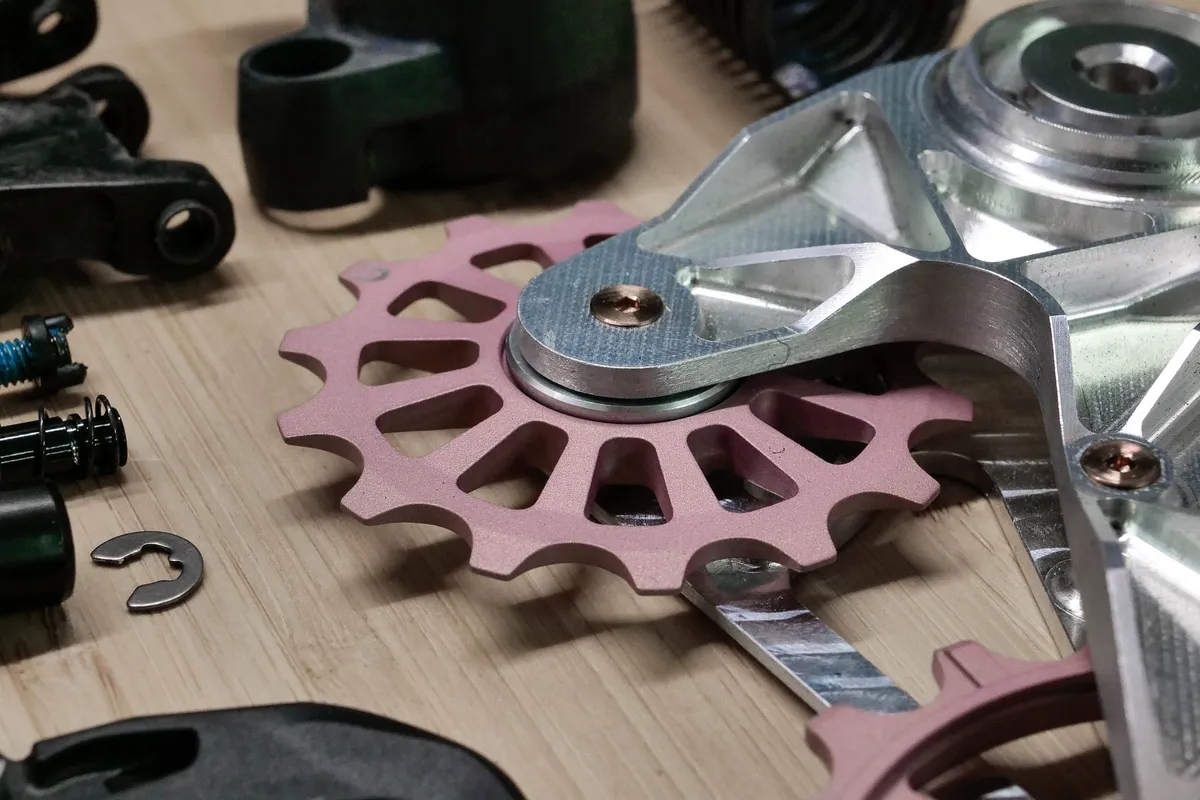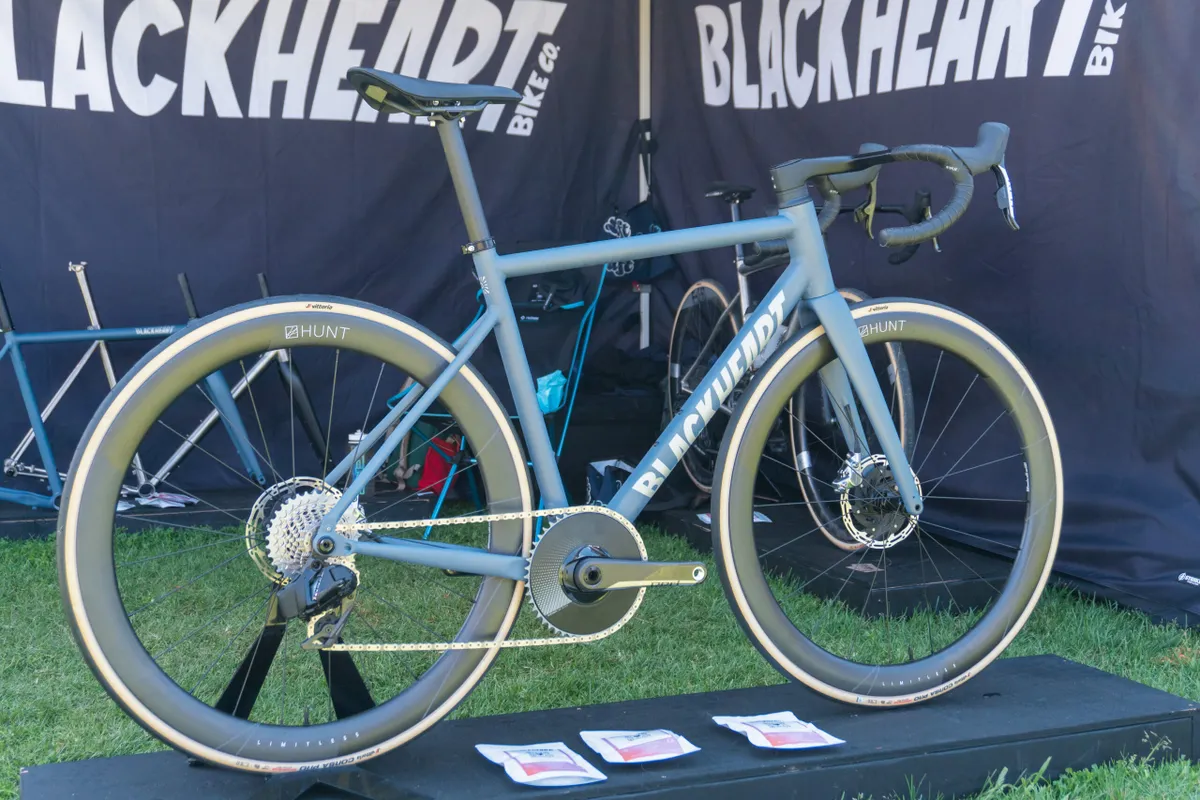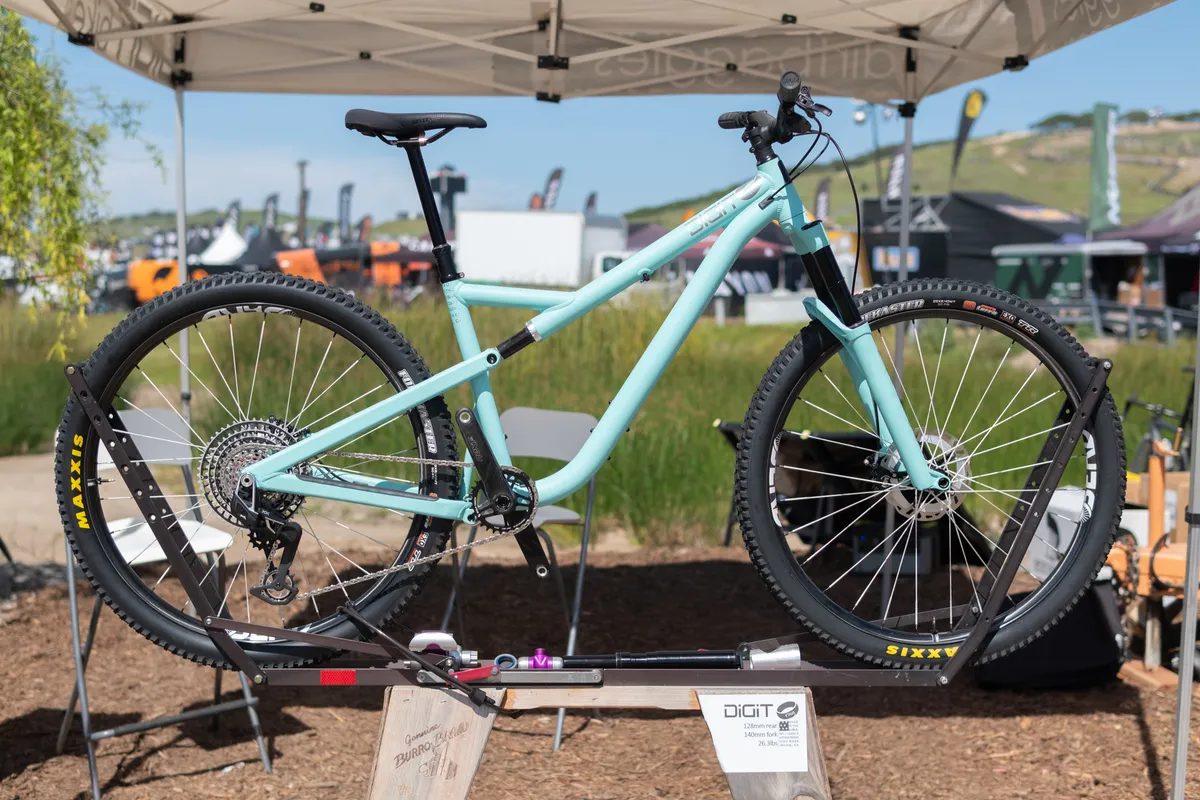The paint finish on your bike and components plays an important role, both aesthetically and in protecting the material underneath.
In recent years, we've seen the emergence of a new contender to traditional finishing methods, with an increasing number of bikes and accessories using Cerakote coatings.
Originally developed for the firearms industry, Cerakote is a ceramic coating that is claimed to offer increased durability and impact protection versus traditional finishes such as painting, anodising or powder coating.
Cerakote has gone from being a niche option to a talking point in the cycling industry, with BlackHeart’s frames, Push Industries' forks and Silca’s bottle cages all sporting Cerakote finishes at Sea Otter earlier this year.
But what is Cerakote, how does it work and what are its claimed benefits versus traditional finishing methods?
What is Cerakote?

Cerakote is a leading brand in ceramic film coating and describes its products as ceramic-based finishes that can be applied to metals, plastics, polymers and wood. The finish is claimed to “enhance a number of physical performance properties, including abrasion/wear resistance, corrosion resistance, chemical resistance, impact strength and hardness”.
The coating is applied via a spray gun in a single coat. The base of the paint is a solvent that carries ceramic particles onto the component being sprayed.
This solvent evaporates, leaving behind a 25-micron thin ceramic coating.

Matt Howe, the owner of Cerakote Up North, a Cerakote-certified applicator, says that “because the coating is so thin, you can spray threads and bearing housings without causing harm to the tolerances”.
Depending on the application, the treated area is either air-cured or oven-baked. This ensures the particles adhere to the product and give full coverage.
Cerakote offers two main products relevant to the cycling industry.
Howe says: “H-series Cerakote is best for mountain bike applications as it is more resilient than C-series, but it requires oven curing at around 130ºC for an hour.”
What are the benefits of Cerakote?

Cerakote can be applied to most frame and component materials used in the cycling industry, including aluminium, steel and carbon fibre.
Cerakote says this is one of its key advantages over anodisation, which can only typically be used on titanium or aluminium alloys.
Because no primer is needed for the coating to be applied, Cerakote finishes are often lighter than powder coating. According to Howe, a typical powder coat finish is more than twice the thickness of Cerakote.

Cerakote is also said to increase wear resistance and impact strength. This means your frame and components should look newer for longer and be able to withstand a greater beating.
“It’s not a protective bubble by any means, but the coating will flex with dents rather than cracking and any chips won’t spread as they would with a powder coat,” says Howe.
Cerakote is also available in more than 200 colours, including pearlescent and metallic options.
Due to the nature of its application, stencils and patterns can also be added to the paint, allowing for individual touches and flamboyant designs.

The end result is akin to a matt finish but forgoes some of the drawbacks of vinyl wraps.
Compared to aftermarket anodisation, Cerakote is also said to be less expensive and offers more customisation.
Which cycling brands use Cerakote?

We saw plenty of Cerakote-coated products at Sea Otter, spanning all cycling disciplines.
BlackHeart's Road AL bike was sporting a Cerakote coating on its double-butted 7005 aluminium frame. This combined the use of stencilling for the brand's logo on the down tube.
This means you don’t have to worry about vinyl stickers peeling away from the frame over time.

Digit’s incredibly integrated Ring trail bike was also finished in a Cerakote coating, with even the fork lowers and crown custom-painted to match the rest of the bike.
Digit has used graphics masked into the finish, leaving the raw alloy frame beneath visible.

Elsewhere, we saw Push Industries using the coating on its Nine.One upside-down fork on the crown and uppers (or lowers depending on how you look at it).
Cerakote Up North has used the coating on various projects including Neko Mulally’s Frameworks downhill bikes and 5Dev titanium cranks.
Will we see more Cerakote coatings?
While we’re yet to see a mainstream manufacturer use the finish on its production bikes, it seems more and more bijoux brands are using the ceramic coating.
We’ll have to wait and see if the claimed durability and ease of application results in it trickling down to a wider range of consumer bikes.
